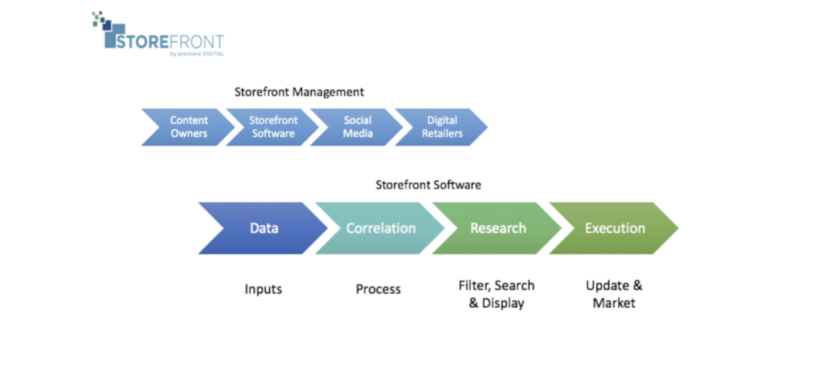Exclusives

Premiere Digital: Connecting the Dots for Content Owners
Story Highlights
Since its start nearly a decade ago, Premiere Digital’s mission has been to simplify global media distribution for content owners, digital distributors and broadcasters large, small and in between.
Over that time the company has evolved to meet the challenges of servicing this wide array of clients with a combination of media expertise, supply chain efficiency, technology, scale, and hands-on customer service. Continuing its mission to drive efficiency and monetization for its clients, and the industry, a key focus for the company is enhancing its Storefront Management software to address the rapidly evolving needs and use cases of the global media distribution marketplace.
The Media & Entertainment Software Alliance (MESA) recently interviewed Steve Rosenberg, Premiere Digital’s chief commercial officer, to go over the company’s origins, and its services and offerings, including recent enhancements the company has made to its Storefront Management software.
MESA: How did Premiere Digital first get off the ground, what market was the company targeting?
Rosenberg: Our founder, Erik Anderson, was one of the original employees of the iTunes video store. From that vantage point he saw the myriad supply chain inefficiencies that impacted content owners, post production houses and ultimately retailers like iTunes. In 2008, Erik founded Premiere Digital to solve the inefficiencies of the supply chain as well as some of the inherent flaws with independent distribution. The company initially targeted media services and content aggregation. The clients base was, and continues to be, content providers of all sizes, including all of the major studios, digital retailers and broadcasters around the world.
MESA: What was the impetus behind the company’s Storefront offerings?
Rosenberg: Around 2012 Premiere started to get some interesting requests from its clients. Things like, “We have 1,000 titles that are going to fall off the store next Friday, can you help change the end dates?” and “Home office is gathering spreadsheets full of temporary price reductions from all of our territories and it takes us weeks to input them into the partner portal, could you make this more efficient?” Having a deep knowledge of availabilities and retailer systems from his time at iTunes, Erik set out to automate these processes and build a simple UI so that customers could be more proactive and efficient.
MESA: How has Storefront evolved since its inception?
Rosenberg: It’s been an explosion of data and use cases since we rolled out the first version in 2013. The product has gone from one module, Updates, to three modules, Updates, My Library and Marketing. Within the modules there are various dashboards, robust filtering/search capabilities and the ability to execute against multiple retailers and social media. Storefront supports 20-plus use cases that work off of millions of data points which are gathered daily. Another way to put it would be, Storefront has evolved from a software tool with a point solution to complete product lifecycle management and business intelligence environment.
MESA: How are you leveraging data to drive Storefront functionality?
 Rosenberg: Data is what drives the system and enables the efficient analysis and execution across these vast libraries. There are two key components required to make the data useful. First the titles, features, TV seasons, series and episodes, need to be correlated across the various retailers and social media interest.
Rosenberg: Data is what drives the system and enables the efficient analysis and execution across these vast libraries. There are two key components required to make the data useful. First the titles, features, TV seasons, series and episodes, need to be correlated across the various retailers and social media interest.
This enables scalability and accuracy across multiple platforms whether you’re doing analysis or executing actions. Second, the data needs to be refreshed daily. The marketplace is very fluid and the only way to take advantage of opportunities and make decisions is with current and historical data. From here the system’s UI enables users to quickly find the data that’s important to them through a robust set of filters and alerts and then execute actions.
MESA: Can you describe how Storefront links data and execution?
Rosenberg: Beyond gathering and correlating the data, the biggest challenges we see and hear about are that traditional storefront management is made up of disconnected systems, pools of data, manual processes, spreadsheets and email, which really spells inefficiency and lost opportunity. The reality is that the vast majority of companies in this space still import, export, cut, paste, pivot and input to gather information, perform analysis and execute actions. To solve for this Storefront combines business intelligence with execution.
The My Library module of Storefront is the business intelligence portion of the software. Examples are availability exception awareness, competitive pricing analysis, charting/placement tracking and more. Once a user of My Library filters to a specific set of titles/avails (which could be one or it could be thousands), the results can be sent to Updates or Marketing.
From Updates the user can adjust most anything about availabilities including price, clearance, preorder, rating, etc. In Marketing, worldwide avails are automatically correlated against social media interest, including when those avails will be running temporary price reductions (if run through Updates). In addition, the system pre-builds ad campaigns with pre-translated ad messaging so campaigns can be targeted to customers in the languages they speak for content available in their language. This can all be controlled, including budget, right from the Marketing dashboard.
From a collaboration standpoint, users in different departments or locales can work together very easily without having to email one another with lists of titles for one activity or another. As an example, various team members around the world could trigger price promotions and a social media team could be completely aware of the price change details and trigger complimentary social campaigns driving interested consumers to a specific destination. From a broadcast or SVOD perspective, the daily EPG information or avail information could drive interested consumers to tune in or subscribe. These are very powerful and efficient ways to affect a large amount of the library and reach a global audience with the limited human resources that most companies have.
MESA: Is Storefront targeted to one particular type of customer?
Rosenberg: Actually it’s not. It started out with a focus on content owners but has evolved to support content owners, retailers and even has potential for broadcasters and SVOD platforms. Companies on all sides of the equation are managing libraries, interested in the competition, concerned about availability accuracy and trying to connect consumers to content. Storefront can solve challenges and address use cases for all types of media companies.









